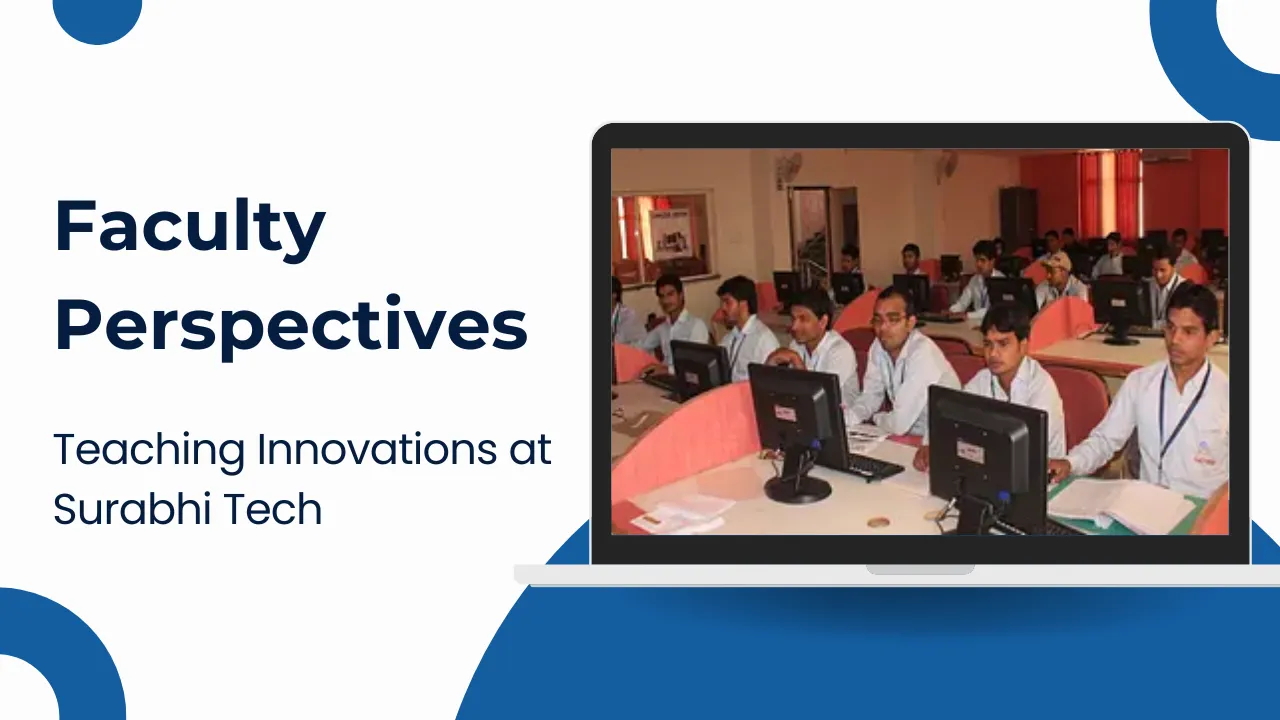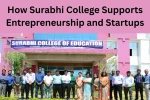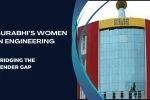Surabhi College of Engineering & Technology: Teaching is evolving—and so is the way students learn. At Surabhi College of Engineering & Technology, classrooms have become spaces of innovation where traditional teaching methods are being reimagined. Faculty members are playing a crucial role in shaping the academic journey by introducing new approaches that bridge theory and practice. These innovations are redefining how engineering students interact with knowledge, skills, and the real world.
This article explores how Surabhi College of Engineering & Technology is transforming education from the inside out. It highlights the teaching strategies, digital tools, faculty insights, and collaborative methods being adopted across departments to make learning more hands-on, personalized, and impactful.
Surabhi College of Engineering & Technology — Empowering Learning Through Innovative Teaching
At Surabhi College of Engineering & Technology, faculty-led innovations are central to enhancing student engagement and performance. Instructors are actively using flipped classrooms, virtual labs, real-time assessments, and project-based learning to bring subjects like machine learning, IoT, cloud computing, and data analytics to life. Through continuous upskilling, peer collaboration, and student feedback, faculty ensure that lessons remain dynamic and career-oriented. This shift not only boosts student confidence but also aligns learning outcomes with industry expectations, making engineering education more relevant and future-ready.
1. Why Teaching Innovation Matters at Surabhi
Today’s engineering students need more than just textbooks—they need immersive learning experiences. At Surabhi, the faculty understands this shift and uses innovation to:
- Improve understanding through interactive learning
- Boost student participation with hands-on sessions
- Integrate current technologies into curriculum delivery
- Promote critical thinking, design thinking, and teamwork
- Equip learners for jobs in automation, software development, and research
These innovations reflect the commitment to building well-rounded, skilled professionals.
2. Teaching Innovations in Practice
a) Flipped Classrooms
Instead of long lectures, faculty assign learning videos and readings for students to explore at home. Classroom time is then used for discussions, problem-solving, and live case analysis—especially useful for subjects like circuits, data structures, and thermodynamics.
b) Smart Classrooms and Live Demonstrations
Surabhi has equipped its classrooms with digital boards, projectors, and interactive tools. Faculty often demonstrate live coding, simulation outputs, or hardware configurations in real-time, making complex ideas more tangible.
c) Virtual Labs and Remote Access
Subjects like networking, cloud infrastructure, and control systems are taught using virtual labs. These tools allow students to experiment, simulate, and test code or hardware without physical limitations.
d) Industry-Based Project Integration
Faculty coordinate with companies to introduce real-world problems into course modules. Students solve these in teams, applying their learning to practical challenges.
e) Case-Based and Peer Learning
Professors use real-world case studies to initiate debates, discussions, and group solutions. Peer instruction sessions help learners explain concepts to one another, reinforcing understanding.
3. Faculty Mentorship and Student Engagement
Mentorship at Surabhi isn’t limited to project guidance. Faculty regularly conduct mentoring hours, offer one-on-one feedback sessions, and advise students on research opportunities, career choices, and soft skills. This approach improves student motivation and fosters a learning culture built on trust and collaboration.
4. Professional Development for Faculty
To innovate, faculty must continuously learn. Surabhi invests in its teaching community by supporting:
- Training sessions in educational technology and tools
- AICTE-recognized certifications in cloud computing, AI, and online pedagogy
- Seminars and workshops on blended learning, simulation, and data visualization
- Inter-departmental sharing of teaching techniques for peer growth
This emphasis on faculty development helps keep teaching methods fresh and effective.
5. Impact on Students and Learning
Teaching innovations at Surabhi have resulted in measurable improvements in student performance and engagement:
a) Improved Academic Results
With flipped and interactive learning, students show better retention and application of concepts, as reflected in internal assessments and university scores.
b) Higher Participation in Research
Faculty-guided research has increased across all departments, with more student papers submitted to journals and tech symposiums.
c) Better Industry Alignment
Courses are designed around practical needs of industries, improving employability and internship success.
d) Confidence in Presentations and Collaboration
Students develop communication and teamwork skills through peer activities and public speaking during presentations and reviews.
6. List of Two Key Teaching Innovations
- Flipped Classroom & Real-Time Demonstrations
- Virtual Labs & Industry-Based Projects
7. Faculty Feedback and Perspectives
“Using real-world projects in class helps bridge the gap between theory and industry. Students learn faster when they know how it’s applied,” says Prof. Ramani, Computer Science.
“Flipped classrooms make teaching more rewarding. I now get to work with students on problem-solving instead of just delivering content,” shares Prof. Sarita from the EEE department.
Such reflections show how teachers themselves evolve through these innovations.
8. Challenges and Solutions
Resistance to New Methods
Students and sometimes faculty resist unfamiliar techniques. Regular orientation sessions and pilot implementations help ease the transition.
Technology Access Issues
Surabhi has responded by improving campus Wi-Fi, setting up access labs, and providing software support.
Time Constraints
Planning and executing interactive classes takes time. Collaborative teaching and shared resources reduce the load.
FAQs
1. How do students benefit from flipped classrooms?
Students study theory at home and use class time to practice applications with teacher support. This helps deepen understanding and clears doubts on the spot.
2. What virtual tools do teachers use?
Surabhi faculty use tools like MATLAB, TinkerCAD, Simulink, and various LMS platforms to support simulation and blended learning.
3. Are faculty members trained in these new techniques?
Yes, teachers regularly attend certified workshops, webinars, and in-house training on innovative teaching strategies.
4. Can students suggest improvements to teaching methods?
Definitely. Faculty welcome student feedback, often using suggestion boxes and surveys to adapt teaching styles.
5. Do teaching innovations help with placements?
Yes. Employers appreciate graduates who’ve worked on real-world problems, understand team dynamics, and have strong practical knowledge.
Final Thought & Call to Action
Teaching innovation at Surabhi College of Engineering & Technology is more than a strategy—it’s a mindset. Faculty members actively rethink, reshape, and redesign the classroom experience to better prepare students for modern careers. Whether it’s integrating virtual labs or mentoring student projects, Surabhi’s instructors are leading a quiet revolution in engineering education.
If you’re an educator looking to bring change, or a student eager to learn in an active and future-ready environment, Surabhi offers the perfect ecosystem. Visit our campus, talk to our faculty, and experience how innovation in teaching is shaping the next generation of engineers.






